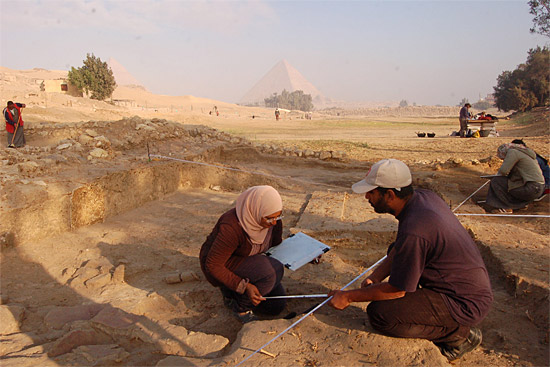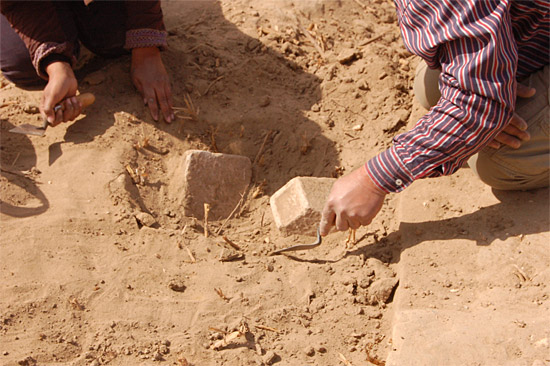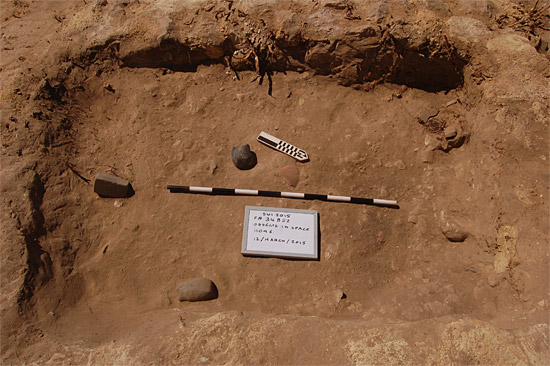by Kirk Roberts (archaeologist)
As work on site draws to a close at Standing Wall Island (SWI), Field School 3 have begun the work of painstakingly recording, photographing and drawing all of the archaeological remains that we can see. What began as an open space surrounded by a few stone walls, is now clearly recognizable as a building, with an entranceway, corridor, and rooms featuring a range of activity and storage areas. As our understanding of the site has grown, though, so have our questions about it!

Reham and Ayman (field-school students) hard at work. View to the North. Photo by Y. Mahmoud.
It is now clear that SWI was not a simple structure built as one event, but rather a large, imposing building which was gradually re-built and expanded, until it encompassed the large enclosure wall which is such a characteristic feature of the site. Within the building were a series of large, regular rooms accessible only via a single narrow doorway on to the outside. Privacy and security were very important elements in the design of the building – many of the rooms can only be accessed via narrow winding entrances, sometimes with screening walls to prevent people from seeing inside. Many of these rooms featured elaborate and beautifully colored plasterwork, with evidence for furniture fittings. Interestingly, most of the spaces are precisely 5 cubits in width (cubits were a standard unit of measurement in ancient Egypt).

Limestone furniture supports in situ. Photo by Y. Mahmoud.
The largest and most private of the rooms features a large amount of red-painted plaster which has collapsed from the walls and ceiling above. Along with these plaster fragments were found three finely crafted limestone stone objects (photo above). These are shown in ancient Egyptian imagery as supports for a chair or bed. Such objects would usually be associated with high-status- so clearly whoever resided here was of some importance!
As well as evidence of the high life, SWI has yielded more day-to-day practical finds such as flint knives, hammer-stones, and whetstones for sharpening blades, like the objects in the room below.
All in all though, the more we’ve found at Standing Wall Island, the more questions have been raised. Who lived in or used this building? Was it a house, or some sort of administrative centre? Why did it develop in such an unusual way to feature the enclosure wall? While we’ve begun to answer the riddle of SWI, some of these questions will have to remain until we return next season.

Hammer-stones, and whetstones. Photo by K. Roberts.
